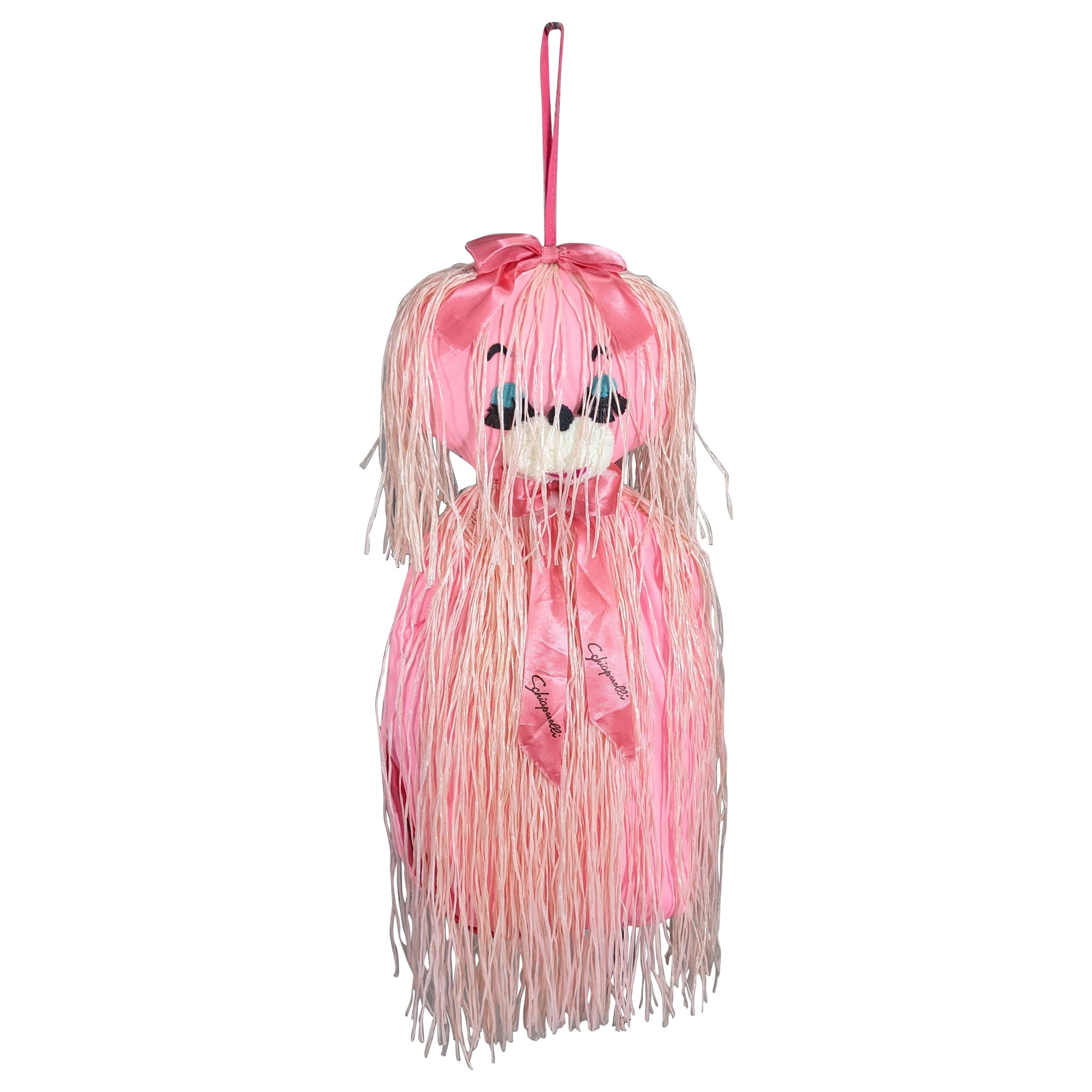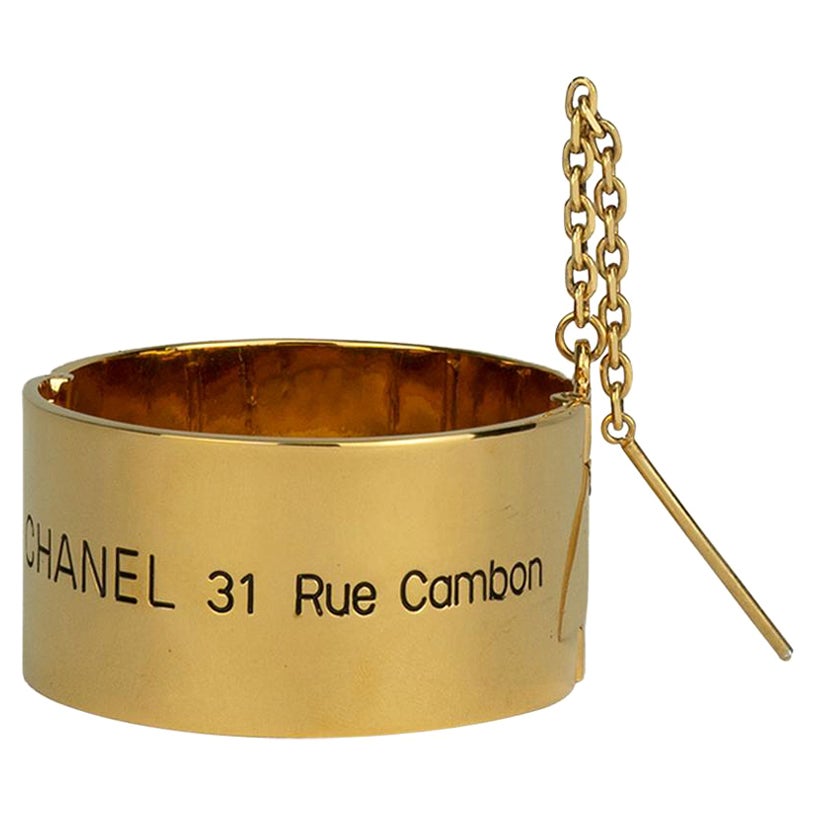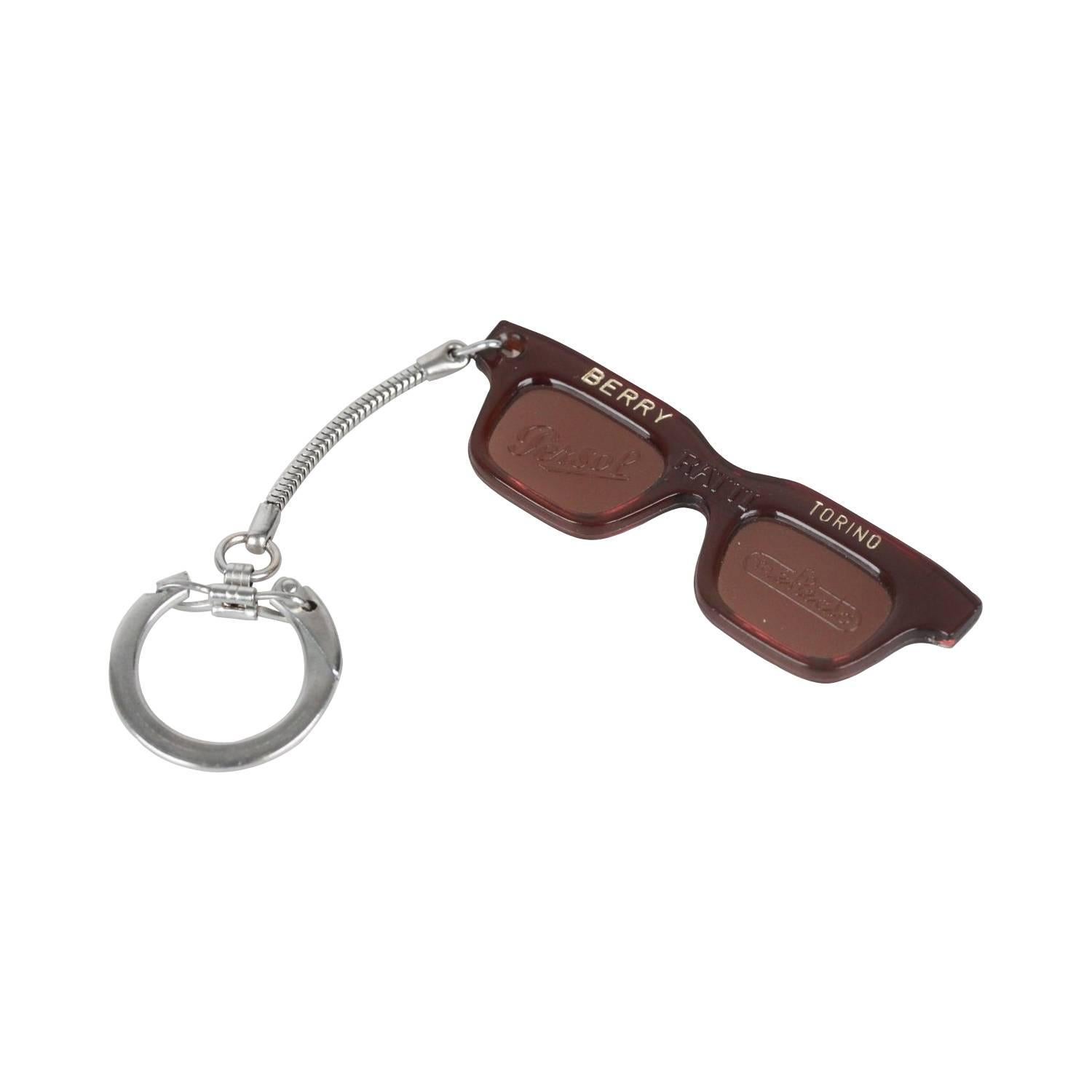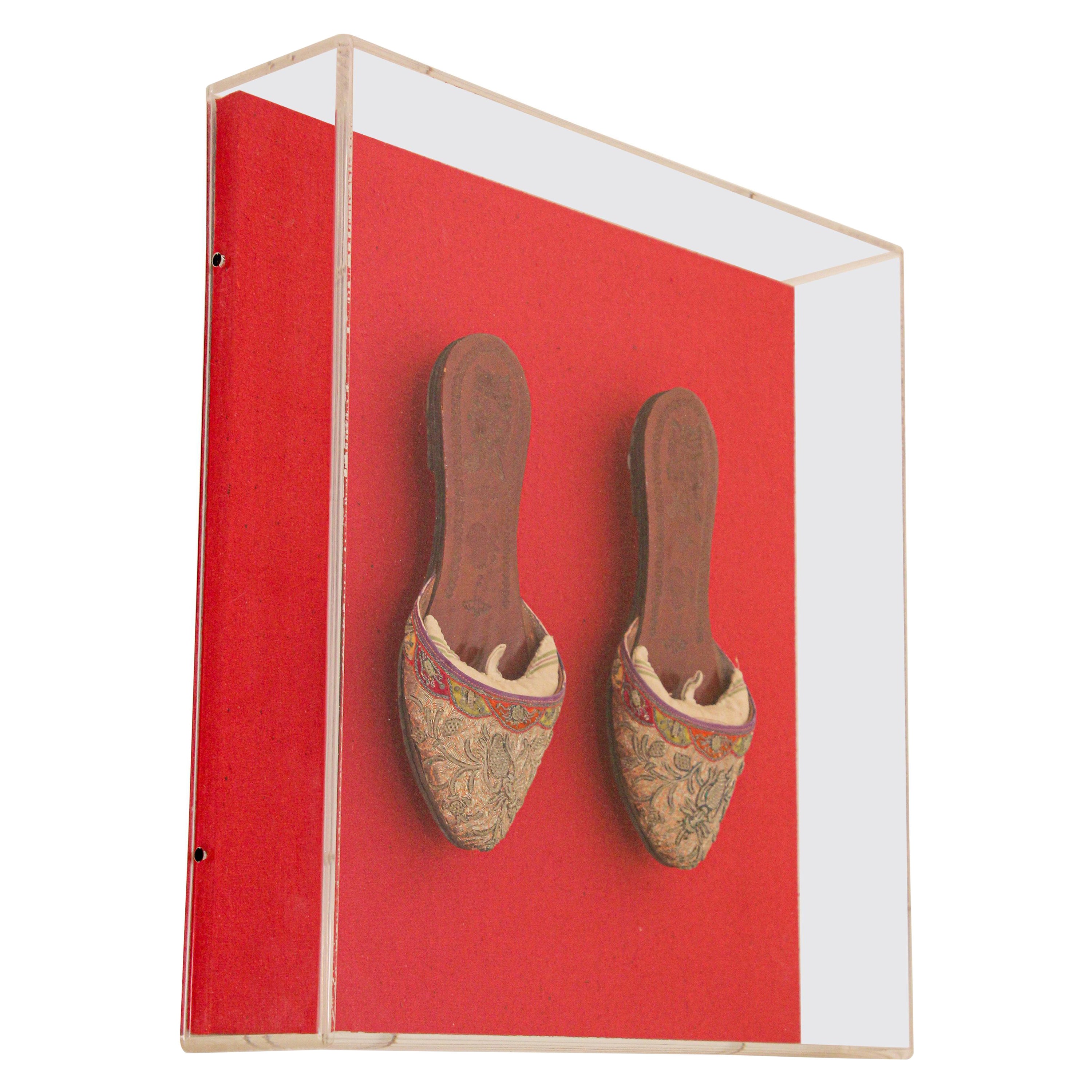Items Similar to France LimitedEdition 1878Mignot 9LeadFigurines BoxSet Can-CanStageBar Curiosity
Want more images or videos?
Request additional images or videos from the seller
1 of 13
France LimitedEdition 1878Mignot 9LeadFigurines BoxSet Can-CanStageBar Curiosity
About the Item
Titled "French Can-Can", this rare limited-edition signed boxed unfolding-stage complete set with nine miniature hand-painted lead and pewter cabaret figurines was originally a one-of-a-kind "depose" creation in the late 19th-Century by the last French lead toy-soldier manufacturer Mignot, which was the incorporated business since 1825 of the Parisian toy-maker C.B. G that was founded in the late 18th Century. As a vintage set by the legacy company CBG Mignot--which acquired the figurine matrixes made until 1940 to handcraft reproductions since the late 20th Century--it was purchased by its collector in the 1990s from the owner of Berthillon, a famous Parisian candy-and-ice-cream shop on the Ile-de-la-Cite. It is rare to find more than one figurine from this edition.
For those who may not be serious collectors of historical figurines or French memorabilia, we think it would make a fun curiosity for an accessible shelf near a bar or desk.
With the red textured-paper-covered thick-cardboard cover removed, one side of the rectangular box falls to enable ample room to view the three-walled dance-theatre that features a printed-paper raised wooden stage and decorative rug surrounded by wallpaper audiences and an elegant performance backdrop. The box includes six intricate figurines, along with a white table and two chairs. As an alternative to seating the male and female patrons on the edge of the stage, the furniture can be useful--unless you wish to playfully suggest a bar fight involving the lone standing man.
The nine movable objects are dominated by three sturdy larger and heavier pewter Can-Can dancers. The figurines are in good vintage condition with minor loss of paint at some edges. The thin-framed furniture is delicate, while the fragile stem of the table must be handled with care when positioned to balance on a flat surface. The size noted in the Measurement Units section is for the closed box. While photographed, the red top of the box lid is darker in one spot above the branded text.
The exterior multicolor sticker is printed “C.B. G, Fabrique Francaise, Marque De Fabrique, Argent Paris 1878, Paris 1889 Member du Jury Hors Concours, Or Paris 1900”. This means that the original novelty was created by Mignot for its award-winning display at the Paris International Exhibition in 1878.
The physically-demanding Can-Can is a traditional chorus line of skirted female dancers recognized for executing many high kicks and acrobatics that temporarily reveal their legs, which became a popular form of adult entertainment for couples by the mid-1800s.
Beyond individual figurines referencing history, limited-edition boxed sets by CBG Mignot were mostly military themed and have been in high demand by contemporary collectors since Malcolm Forbes publicized his extensive Mignot armies.
- Dimensions:Width: 5 in (12.7 cm)Depth: 3.5 in (8.89 cm)Length: 7.5 in (19.05 cm)
- Style:Victorian (In the Style Of)
- Place of Origin:
- Period:
- Material Notes:hand-painted lead and pewter figurines for boxed printed-paper stage set
- Condition:Wear consistent with age and use.
- Seller Location:Chicago, IL
- Reference Number:1stDibs: LU3244219203272
About the Seller
5.0
Vetted Seller
These experienced sellers undergo a comprehensive evaluation by our team of in-house experts.
Established in 2012
1stDibs seller since 2022
9 sales on 1stDibs
Typical response time: 1 hour
- ShippingRetrieving quote...Ships From: North Adams, MA
- Return PolicyThis item cannot be returned.
More From This SellerView All
- Carder Steuben Rare "MossAgate" Numbered Blue Matrix Crackle BlownGlass VaseBy Steuben GlassLocated in Chicago, ILAntique colorful Steuben blown glass pieces featuring the "Moss Agate" technique designed by its co-founding artistic director Frederick Carder are unsigned and "all rare" according ...Category
1920s American Vases
- Carder Steuben Rare ThickLipWrapApplication CrystalCased Amethyst Bubbly VaseBy Steuben GlassLocated in Chicago, ILThis antique ArtDeco-period Steuben mostly purple glass vase designed by its co-founder Frederick Carder is a colorless-crystal-cased "Transparent Amethyst Bubbly" type with colorless crystal decoration including a rare cut lip-wrap with thick undulating application that adds up to a 3.5-inch-diameter flat rim, along with a smooth casing over a rare see-through twisted linear air-trap pattern with a wider 4-inch hip near the footless bottom. Weighing 625 grams, the short heavy vase is a hybrid matching Steuben shape-numbers 7273 with its variety of colorless cut-crystal lip-wrap decoration and 7036 with its colorless cut-crystal casing. These like forms were produced in multiple colors/shading and patterns with or without a foot and/or decoration in a wide variety of hybrid techniques that are characteristic of the designs by Carder. The 7000 series was among the last produced by Carder before his 30 years as artistic director since 1903 came to an end based on the board decision of Steuben parent-company Corning Glass Works to abandon color by 1933 and move forward using only progressive optical glass with colorless brilliance. The Carder Steuben Glass Association has published for its online shape-index a handful of approximately 10-inch-tall 7273/7036 versions, along with similar shorter shapes like the 8.25-inch 7083 vase and 7 5/8-inch 7206 "Bubbly" vase, along with the much earlier 1153 salt-and-pepper shakers of about half that size but of unlimited dimensions in a vague line drawing. A photo of one 1153-variation shows them with perforated metal caps at 3.5-inches tall in "Transparent Amethyst" like our vase, but with optic ribs instead of air-trapping. Despite the early line drawing, it is most likely that our vase was made in the late 1920s to early 1930s when Carder designed air-trap pieces with coarser glass particles and heavier crystal casing and applications. In the 1974-published book featuring only museum-quality glass works, Steuben: Seventy Years of American Glass Making, its pages 42-43 highlight a similar unmarked photographed Cluthra vase...Category
Early 20th Century American Vases
- Vintage EnameledSilverHeartPendants Linked AdjustableChain Decor Belt NecklaceLocated in Chicago, ILThis vintage amusing enameled silver pendant adjustable-chain unsigned necklace, belt or novel interior decoration features heart-shaped two-inch-long links painted in six colors of ...Category
Late 20th Century Decorative Objects
- Couture MartinMargiela 1998 WorkOnPaper & Artisanal Line0 WhiteLingerie BoxedSetBy Martin Margiella, Maison Martin MargielaLocated in Chicago, ILAs conceptual art while he transitioned to Hermes Creative Director in 1998, Belgian Martin Margiela--whose creations today debut in the setting of a contemporary-art gallery priced at upwards of EU$150,000--created this stenciled or block print. Conceived by arguably the most culturally influential contemporary fashion designer since Gabriel "Coco" Chanel, it is part of a limited-edition-of-two white-boxed set that includes the couture Maison Martin Margiela "Artisanal Line 0" body-harness lingerie in its maker's signature color white for Spring 1998. The same lingerie--one white and the other black--starred in a film made by Margiela among the five that he screened to present his Spring/Summer 1998 "Flat Collection" in Paris at the Conciergerie. In that film titled "4", which begins with a view of the iconic topless tabi "boots", the hands of Margiela's white-labcoat-clad assistants enter the frame to manipulate different garments on a model who initially wears the exterior lingerie (see our photos) as if jewelry. A simple dark collared coat, a white collared button-down shirt, and a dark button-down cardigan--all with the "displaced neckline" or "displaced shoulder" of the flat-hanging clothes--are transformed into new collarless plunging v-neck garments, which appear to be ruched when folded under the harness of the lingerie. Both black versions of the lingerie are in museum collections. In Martin Margiela's home-country, the ModeMuseum (MoMu) archived its collected piece as OBJ7660. In the 2018 Parisian retrospective exhibition at Musee de la Mode/Palais Galleria when its artistic director was Martin Margiela (working with Curator Alexandre Samson), the second black lingerie was featured on a mannequin and collected the same year by the Vogue Paris Foundation. Other conceptual designs from this same 1998 collection of jewelry were acquired by TheMet museum in Manhattan. Without the restriction of the use and function of clothing, the small uncreased print--on a card that can be removed from the interior-box bottom that it loosely spans--shows the buyer how to endlessly fashion unique tops using the structural-elastic lingerie as an undergarment for their own pre-worn button-down shirts. This is a more obvious example of the once avant-garde concept of anti-fashion upcycling that Martin Margiela introduced to challenge social and fashion-industry norms by the 1990s, which echos the revolutionary anti-art of Marcel Duchamp. Essentially, valuable art/fashion can be made from everyday vintage objects. While Duchamp did so in 1917 with a men's porcelain urinal titled "Fountain" attached to a gallery exhibition wall, they both made the point that it is the way that such items are reassembled that can make the result a progressive statement. What makes the print so special and worthy of framing for display is that, without words, the three numbered images on a single white card encapsulate the before-its-time fashion manifesto of Martin Margiela to recycle fashion in remarkable new wearable ways, such as harnessed by his unique lingerie. According to The New York Times in its 2021 feature-story that reflected on his radical fashion design and delved into his crossover art, Margiela "changed how we dressed in the 1990s", while his art embodies "the visionary man he has always been." At a turning-point shortly after Margiela designed this couture set in 1997, his personal manifesto became more difficult to accomplish in his fashion career as the new leader of France's historic luxury fashion-house Hermes, for which his first womenswear collection was presented for Autumn/Winter 1998. Frustrated by the limitations of the industrialized luxury trade and conglomerate conflicts with his closely guarded privacy, the famously "invisible" designer pre-maturely retired from the fashion industry in 2009 to independently build on his clever artistry in other mediums. Margiela continues to demonstrate what he often told his fashion teams: "The less you have, the more creative you are as a designer." This minimal finely-crafted lingerie without size or gender restriction--composed of adjustable "polya-elasthanne" straps with a clear anti-slip strip on the underside and three silver-plated metal double-rings--can be worn either as a concealed structural undergarment or as a visible jewelry-like body harness in appreciation of its meaning as a foundation for recycling fashion, pure form, and meaningful color. While the initial Maison Martin Margiela ready-to-wear brand tag until the late 1990s was a distinct corner-sewn unbranded white label accompanied by tags for origin and materials/care, the couture version for this lingerie is a single tiny white unbranded tag stitched in a line near the end of the waist strap, noting in English, "Made In France," with succinct material/care identification. The set's original white unbranded box and its white black-typed couture-identification sticker complete the "invisible-brand" aesthetic. We interpret the black-type codes on the aged box-sticker (“E98 ST HAUT; Struct Elas Blanc; 02; TU"): Spring 1998 Haute Couture; white structural-elastic garment; Artisanal Line 0 edition of two; one size only. The print, lingerie and box are in very good condition as shown in the photos with only one mark on the rear edge of the exterior box-lid. Although initially tried on by the sole owner to realize a restructured shirt, the lingerie body-harness was never worn. It was collected in Belgium at the Brussels boutique where Martin Margiela initially sold his brand with his founding business-partner Jenny Meirens since 1988. Prior, Margiela worked for several years as a fashion-design assistant to Parisian Jean Paul Gaultier. Both designers have since received independent museum retrospectives internationally--from Paris' Grand Palais and Musee Palais Galliera (The City of Paris Fashion Museum) to NYC's The Brooklyn Museum and Antwerp's MoMu. While others continue to try, Martin Margiela (b.1957) is the only leading fashion designer to have made a full-time transition to the commercial contemporary-art world with such highly valued works. As a rare revealing piece of both fashion and art history, the increasing value of this Maison Martin Margiela 1997...Category
1990s French Sculptures
- Couture TextileArt Vienna Austria ArtistSigned Vintage Brocade&Silk TeddyBearToyLocated in Chicago, ILAs unique vintage handcrafted textile art including a 20th-Century tag with its artist signature, Vienna-Austria origin and stuffing content, this multi-color "clown" teddy bear has ...Category
20th Century Austrian Toys
- MontblancMeisterstuckClassique Germany Gilt BlackResin Rollerball Pen with InkBy MontblancLocated in Chicago, ILThe best-known writing instrument of all Montblanc collections, this Meisterstuck Classique features six gilt rings and clip on the black-resin rollerball pen with a pull-off cap, un...Category
20th Century German For The Desk
You May Also Like
- Elsa Schiaparelli's "Sleeping de Schiaparelli" Perfume SachetsBy Elsa SchiaparelliLocated in New York, NYSchiaparelli's Mint in Box, "Sleeping" perfume sachets (3) of "Sleeping Blue" satin, over stitched with Schiaparelli's signature "S". Still fragrant wrapped in the original unopened cellophane, tied with vibrant yellow ribbon. "Sleeping," is one of many perfumes Schiaparelli designed, debuted for her summer 1940 collection. For her spring 1939 Commedia dell' arte collection, Schiaparelli had been inspired by Man Ray's 1939 painting...Category
1940s French Curiosities
- Rare Surrealist Schiaparelli Figural Cat Lingerie BagBy Elsa SchiaparelliLocated in New York, NYRare and unusual figural Surrealist Elsa Schiaparelli lingerie bag. This amusing, rare Schiaparelli figural cat lingerie bag is made of bright pink acetate, with "Shocking" Pink ribbon accents and long pink raffia fringe. With a white plush snout and hand cut felt eyes eyebrows and mouth. Excellent Condition. Signed, Zipper Entry on back. Length 18" x Wide 9". 1950's. Schiaparelli, "I gave to pink, the nerve of the red, a neon pink, an unreal pink, Shocking Pink". Yves Saint Laurent: Schiaparelli's pink was "an aggressive, brawling, warrior pink” Elsa Schiaparelli's "Shocking" Pink was a color which derived from a 17.27 carat rose colored Cartier diamond known as the Tete de Belier, belonging to her friend and client, Daisy Fellowes. Shocking Pink was used for the eponymous perfume "Shocking", which was launched in 1937. The packaging was designed by artist Leonor Fini and the bottle was based on Mae West's curvaceous figure. Her first shoe-hat, designed for her autumn 1937 collection, had a Shocking Pink heel. Salvador Dali loved...Category
1950s French Curiosities
- Chanel 31 Rue Cambon Cuff BraceletBy ChanelLocated in Miami, FLChanel 31 Rue Cambon Cuff Circa 1990s {VINTAGE 20 Years} Gold plated 31 Rue Cambon Address & Telex Engraved Pin closure 7.75" x 1.25" Made in FranceCategory
1990s French Curiosities
- Persol Ratti Berry Torino Vintage Sunglasses Keyring CharmBy PERSOL RATTILocated in Rome, Rome- Sunglasses-shaped keyring/charm by PERSOL RATTI - Rare & Collectibles item! - Crafted in brown plastic - 'BERRY' & 'TORINO' embossed on the sunglasses...Category
1980s Italian Curiosities
- Asian Chinese Antique Leather Shoes and Silk Embroidered Framed ArtLocated in North Hollywood, CAFramed in a Lucite box, pair of Asian Chinese leather and silk shoes embroidered and adorned with gold thread. Exquisite pair of collectible antique shoes mounted and presented on a ...Category
Early 20th Century Chinese Curiosities
- Art Nouveau 1890 Flamenco Pericon Large FanLocated in Bilbao, ESArt Nouveau 1890 Flamenco Pericon Fan Open 66cm X 34cm / 25,98in x 13,38in Ebonized wood. Ideal for cocktails and galas, for dancing and for breezing ...Category
1880s Spanish Decorative Objects




